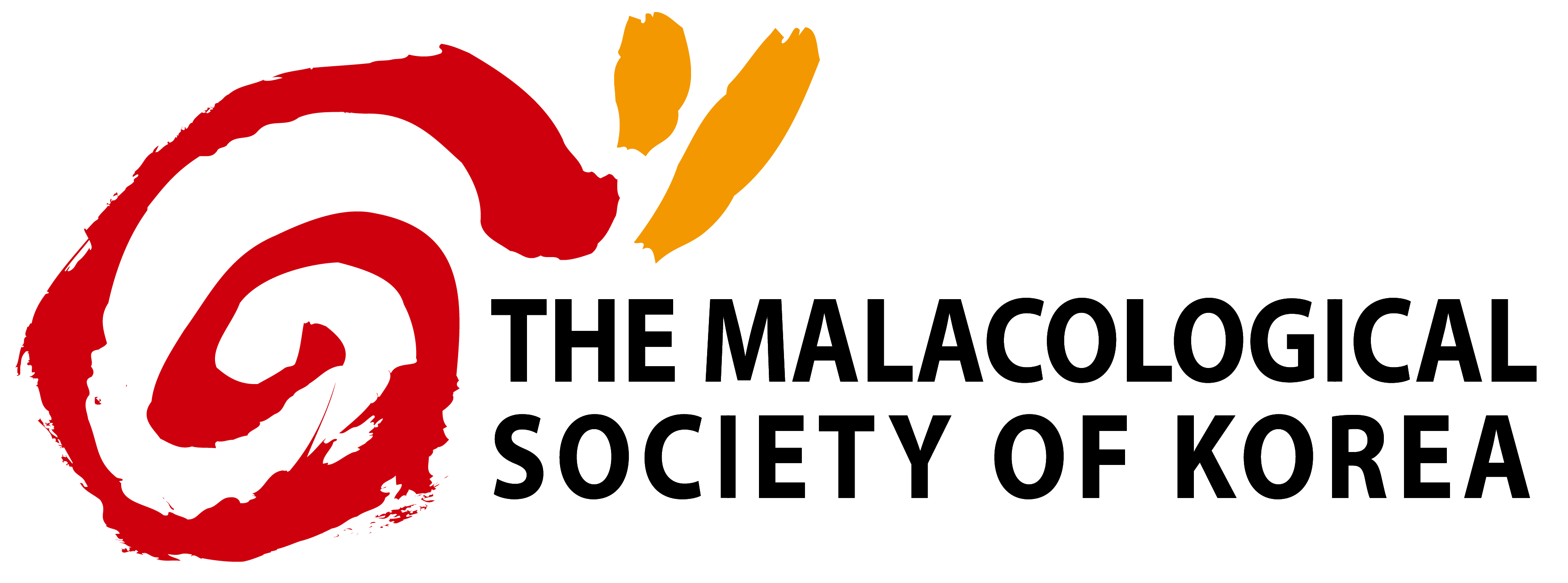open access
메뉴
open access
메뉴 ISSN : 1225-3480
ISSN : 1225-3480
본 논문은 수온과 염분 및 먹이에 따른 큰구슬우렁이의 생존율과 성장을 실내 수조에서 실험한 결과이다. 30일동안 사육한 수온별 생존율은 <TEX>$15^{\circ}C$</TEX>(50%)와 <TEX>$20^{\circ}C$</TEX>(60%)의 수조에서 <TEX>$25^{\circ}C$</TEX>(50%)와 <TEX>$30^{\circ}C$</TEX>(0%) 수조보다 높은 생존율을 보였다. 실험기간동안의 총증중량은 <TEX>$20^{\circ}C$</TEX>에서 3.79 g, <TEX>$15^{\circ}C$</TEX>에서 3.13 g, <TEX>$25^{\circ}C$</TEX>와 <TEX>$30^{\circ}C$</TEX>에서는 모두 폐사하였다. 증중률은 <TEX>$20^{\circ}C$</TEX>에서 12.20%, <TEX>$15^{\circ}C$</TEX>에서 9.95%였으며, 일간 증중율은 <TEX>$20^{\circ}C$</TEX>에서 0.407%, <TEX>$15^{\circ}C$</TEX>에서 0.332%였다. 염분별 생존율은 30 psu(70%)와 35 psu(70%)에서 높은 생존율을 보였고, 20 psu에서는 10%로 낮게 나타났으며, 10 psu와 15 psu에서는 실험시작 10일 이내에 모두 폐사하였다. 총중량으로 산정한 실험기간 동안의 증중률은 35 psu에서 11.641%, 30 psu에서 9.766%, 25 psu에서 1.437%, 20 psu에서 0.896%였으며, 일간증중율은 35 psu에서 0.388%, 30 psu에서 0.326%, 25 psu에서 0.048%, 20 psu에서 0.030%였다. 총 60일간 사육한 먹이에 따른 큰구슬우렁이의 생존율은 새우류를 먹인 실험구가 62.5%, 패류를 먹인 실험구가 87.5%, 어류를 먹인 실험구가 75.0%로 패류를 먹인 실험구가 비교적 높은 값을 보였다. 총중량으로 산정한 실험기간동안의 총증중량은 조개류 급이군에서 6.63 g, 어류 급이군에서 1.68 g, 새우류 급이군에서 1.50 g의 순이었으며, 성장률은 조개류 급이군에서 15.001%, 어류 급이군에서 3.934%, 새우류 급이군에서 3.567%를 나타내었으며, 일?lt;봉揚껨 조개류 급이군에서 0.250%, 어류 급이군에서 0.066%, 새우류 급이군에서 0.059% 순으로, 조개류 급이군에서의 성장이 가장 좋았으나, 어류와 새우류 급이군에서는 유의적인 차이를 보이지 않았다.
The survival and growth of Glossaulax didyma didyma (Röding) were measured in the laboratory under controlled conditions (water temperature, salinity and diet). The effect of temperature on G. didyma didyma was examined at four different temperatures (15, 20, 25 and 30℃) with 30 psu for 30 days. The results show that the growth and survival rates of G. didyma didyma were significantly higher at 15℃ and 20℃ than other temperatures. The effect of salinity on G. didyma didyma was also examined at six different salinities (10, 15, 20, 25, 30 and 35 psu) with 20℃ for 40 days. The results show that the growth and survival rates of G. didyma didyma were significantly higher at 30 psu and 35 psu than other salinities. Finally, the effect of diets on G. didyma didyma was examined with three single-component diets (prawn, shellfish and fish) at 20℃ and 30 psu for 60 days. The results show that the growth and survival rates of G. didyma didyma fed on shellfish were significantly higher than those fed on prawn and fish.
Amio,M, (1963) A comparative embryology of marine gastopods, with ecological considerations, Shimonoseki University of Fisheries
Choe, B.L, (1999) Commercial Molluscs from the Freshwater and Continental Shelf in Korea, National Fisheries Research and Development Institute Publish
Kim, D.G, (2007) Reproductive ecology of the bladder moon, Glossaulax didyma (Gastropoda: Naticidae) in Western Korea, Korean Journal of Malacology
Kim, K.S, (2002) Influence of increased temperature on the standard metabolism in the marine bibalves acclimated to seasonal water temperature. 1. effects of acclimation temperature, Journal of Korean Fisheries Society
Kim, S.H, (2006) Molting and Growth of the Larval Swimming Crab, Portunus trituberculatus (Miers, 1876), at Different Water Temperature, M.S. Thesis, Kunsan National University, Gunsan
Kim, S. K, (1999) Growth of the Juvenile Top Shell, Batillus cornutus in Food and Water Temperature, M.S. Thesis, Cheju National University, Jeju
Kinne,O, (1970) Temperature. In: Marine Ecology, Vol. 1. Environmental Factors, Part 1, Wiley-Interscience. New York
Kinne,O, (1996) Physiological aspects of animal life in estuaries with special reference to salinity, Netherlands Journal of Sea Research
Lee, J.A, (2003) The Energy Budgets in Various Environments and Environmental Tolerance of Ezo Abalone, Haliotis discus hannai, Ph.D. Thesis, Pukyong National University, Busan
Min, D.K, (2004) Mollusks in Korea. (revised supplementary edition), Hanguel Graphic, Busan
Seon, S.C, (2005) Influence of water temperature on spawning induction, larval and spat rearing of trumpet shell, Charonia lampas sauliae, Korean Journal of Malacology
Tsuchiya,M, (1983) Mass mortality in a population of the mussel Mytilus edulis L. caused by high temperature on rocky shores, Journal of Experimental Marine Biology and Ecology
Yoo, J.S, (1976) Korean Shells in Colour, Iijisa, Seoul. [in Korean]
